What's Happening in Hawaii
during the 1st week in July:
during the 1st week in July:
 "O Hinaia'ele'ele ka malama,
"O Hinaia'ele'ele ka malama,'aluka ka pala a ka 'ōhi'a.
Hinaia'ele'ele is the month when
the mountain apples ripen everywhere."
Polynesian settlers introduced several kinds of fruit trees to the islands, including bananas, coconuts, and 'ōhi'a 'ai, the mountain apple.
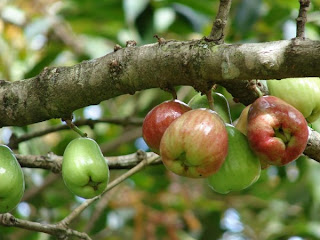 Mountain Apple, Hana Hwy, Maui
Mountain Apple, Hana Hwy, MauiPhoto: Forest & Kim Starr
All three thrived and grew wild, with 'ōhi'a 'ai establishing itself in the wet mountain valleys up to about 1800 feet. 'Ōhi'a 'ai means "edible 'ōhi'a," and Hawaiians ate the fruit dried as well as fresh. 'Ōhi'a 'ai was also prized for its medicinal properties, with old fruit prescribed for sore throats and the bark and flowers used to treat colds and relieve itching, among other things.
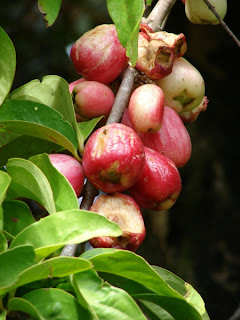 Mountain Apple, Hana Hwy, Maui
Mountain Apple, Hana Hwy, MauiPhoto: Forest & Kim Starr
Perfectly ripened 'ōhi'a 'ai appears in sayings as a metaphor for human beauty, and rare white fruit was linked with Hinaulu'ōhi'a, goddess of the 'ōhi'a forest. The association of 'ōhi'a 'ai by name and legend with the 'ōhi'a lehua and another native tree, the 'ōhi'a ha, indicates the early Hawaiians' botanical skill. All three are members of the myrtle family and have the showy, tufted flowers with many stamens that are common to it.
Photo: Forest & Kim Starr
Photo: Forest & Kim Starr
Several other trees in the myrtle family were introduced to the islands later and have also thrived, including eucalyptus, guava, paperbark, and rose apple.
Text and drawn image taken from "Hawaii: A Calendar of Natural Events"
published by the Bishop Museum and Kamehameha Schools in 1989



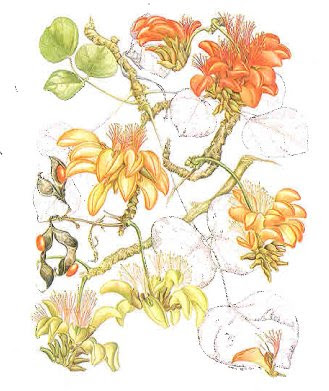




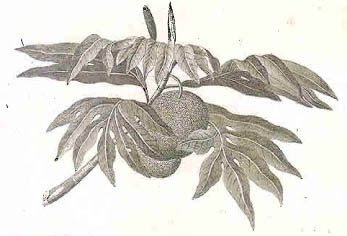
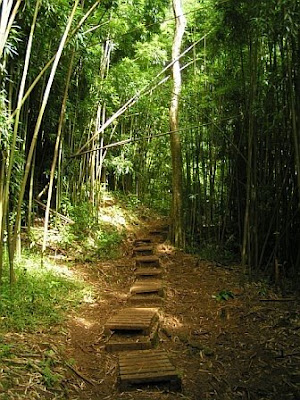 The well-maintained Manoa Falls Trail
The well-maintained Manoa Falls Trail Keep an eye out for HUGE banyan trees along the trail.
Keep an eye out for HUGE banyan trees along the trail. A sneak peek at Manoa Falls from the trail.
A sneak peek at Manoa Falls from the trail. Bamboo lining the beginning of the Aihualama Trail
Bamboo lining the beginning of the Aihualama Trail "I can see Diamond Head!"
"I can see Diamond Head!"